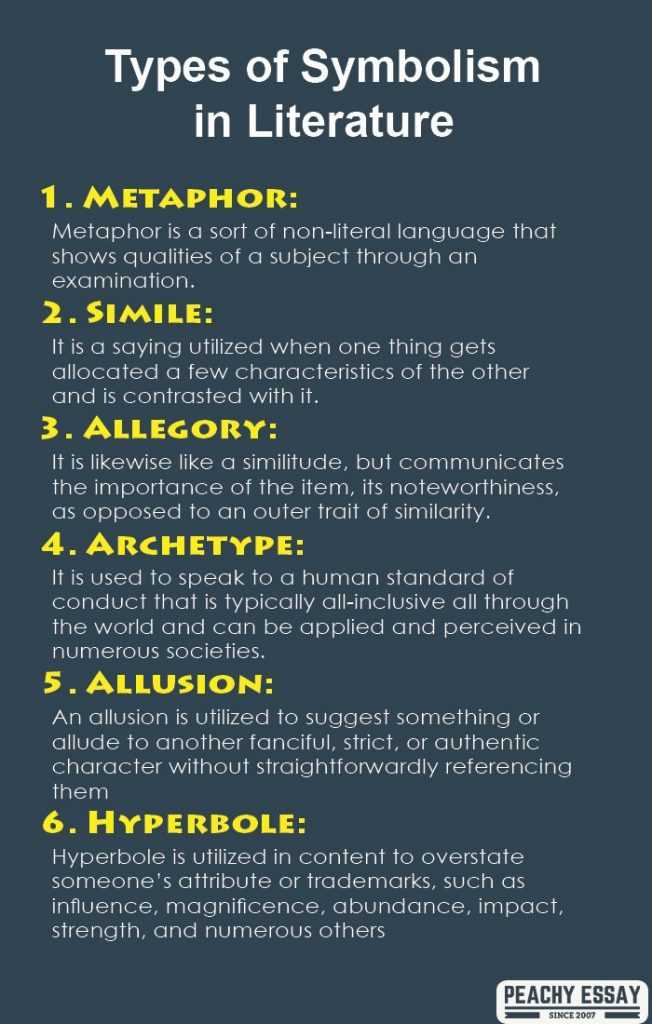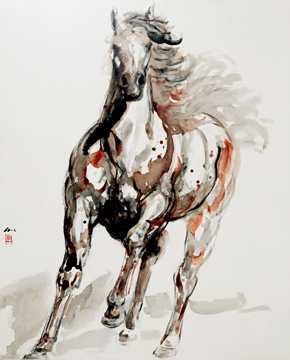Table of Contents
- Understanding the Evolution of Horse Imagery in Modern Art
- Techniques and Mediums: Exploring Unique Approaches to Horse Paintings
- Symbolism and Interpretation: The Emotional Depth Behind Modern Equine Art
- Selecting the Perfect Piece: Tips for Collecting Modern Horse Paintings
- Inspiring Artists to Watch: Emerging Voices in Equine Artistry
- Q&A
- Final Thoughts


Understanding the Evolution of Horse Imagery in Modern Art
The portrayal of horses in modern art has undergone remarkable transformations, reflecting various cultural and artistic movements throughout the years. Beginning with the academic realism of the late 19th century, artists like Rosa Bonheur celebrated the majestic beauty and strength of horses, capturing them in lifelike poses amidst pastoral scenes. As art evolved into the 20th century, abstraction and expressionism began to shift the focus away from realistic representations, giving rise to more stylized interpretations that challenged viewers to see horses through a different lens.
Art movements such as Cubism and Surrealism redefined the essence of equine imagery, utilizing fragmented forms and dreamlike narratives to convey deeper emotional landscapes. Notable artists like Pablo Picasso and Salvador Dalí depicted horses not merely as animals but as symbols intertwined with human experience, emotions, and subconscious thoughts. This approach raised intriguing questions about the connection between humanity and nature, suggesting that horses could represent freedom, power, and the untamed spirit.
In contemporary art, horse imagery continues to flourish, embodying a blend of tradition and innovation. Many artists experiment with mixed media, incorporating digital technologies, sculpture, and installation art, while still paying homage to the historical significance of horse representations. The diversity of styles and techniques leads to vibrant exhibitions worldwide, reflecting a synthesis of cultural interpretations and personal expressions. Today, viewers can appreciate horses as both subjects of admiration and catalysts for broader discussions about nature, identity, and artistic identity:
| Artist | Style | Significance |
|---|---|---|
| Rosa Bonheur | Realism | Celebration of natural beauty |
| Pablo Picasso | Cubism | Fragmentation and symbolic representation |
| Salvador Dalí | Surrealism | Exploration of subconscious connections |
| Contemporary Artists | Mixed Media | Fusion of tradition and modernity |
Techniques and Mediums: Exploring Unique Approaches to Horse Paintings
When it comes to depicting the grace and power of horses, artists have explored a myriad of techniques and mediums that breathe life into their subjects. One popular approach is the use of acrylic paint, celebrated for its vibrant colors and quick drying time, allowing artists to work in layers to build texture and depth. Many contemporary artists incorporate mixed media, blending traditional paint with materials like charcoal, ink, and even fabric, to create stunning, multi-dimensional works that draw the viewer in. Additionally, digital painting has gained traction, offering endless possibilities for experimentation and transformation of equine imagery.
Different styles resonate with various audiences, reflecting the emotional connection between humans and horses. Among the techniques gaining popularity is the use of abstract forms to capture the essence of a horse’s movement rather than its physical traits. Squiggles and bold strokes can suggest speed and agility, making a powerful statement with minimal representation. Artists are increasingly turning to expressionism, using exaggerated colors and forms to convey the spirit and energy of horses, allowing their viewers to feel the intensity of the moment rather than just see it.
To further illustrate the diverse approaches in horse painting, here’s a comparison of notable styles and their defining characteristics:
| Style | Characteristics | Mediums Used |
|---|---|---|
| Traditional Realism | Focus on accurate representation Detailed textures and anatomy |
Oil, Watercolor |
| Abstract | Use of shapes and colors Emphasis on feelings and motion |
Acrylic, Mixed Media |
| Expressionism | Exaggerated colors Dynamic and emotive |
Pastels, Digital Art |
Each artist brings their own vision to the canvas, influenced by their personal experiences with horses and their surroundings. By combining innovative techniques and a variety of mediums, modern horse paintings invite us to explore not just the physical beauty of these majestic animals, but also the deep emotional relationships that exist between them and humankind.


Symbolism and Interpretation: The Emotional Depth Behind Modern Equine Art
Modern equine art is rich with symbolism, offering a profound exploration of emotional landscapes. The depiction of horses, often representing freedom and strength, invites viewers to connect deeply with the art. These creatures, celebrated for their grace and power, can signify a myriad of human emotions such as courage, passion, and resilience. Artists frequently manipulate color, texture, and form to convey these sentiments, creating a dialogue between the viewer and the artwork that transcends mere visual pleasure.
Many artists draw inspiration from various cultural narratives surrounding horses, illuminating layers of meaning in their work. For instance, the portrayal of a horse in flight can evoke feelings of escape and liberation, while a standing horse might symbolize stability and strength. Highlighting these contrasting states, equine art serves as a metaphorical mirror, reflecting the viewer’s own emotional experiences. The nuanced interplay of light and shadow, along with the intricate detailing of equine anatomy, further enhances these interpretations, inviting deeper contemplation.
To solidify the emotional connections that modern horse art can elicit, techniques such as color psychology play a crucial role. The use of specific palettes can significantly affect the viewer’s perception and interpretation. Consider the following table that illustrates how different colors can modify the feelings associated with equine representations:
| Color | Emotional Association | Interpretation in Equine Art |
|---|---|---|
| Red | Passion, vitality | Dynamic energy, intense emotions |
| Blue | Calm, trust | Serenity within strength, reliable spirit |
| Gold | Luxury, achievement | Nobility and high status in relationships |
the emotional depth expressed through modern equine art is a testament to the timeless bond between humans and horses. The complex symbolism, combined with impactful artistic techniques, urges us to reflect on our own experiences and emotional narratives. By engaging with this rich tapestry of interpretations, viewers can find personal resonance and a deeper appreciation for the art form.


Selecting the Perfect Piece: Tips for Collecting Modern Horse Paintings
When embarking on your journey of collecting modern horse paintings, it’s essential to consider a few crucial aspects to ensure your selections resonate with your personal style and enhance your space. Start by exploring different artists and their unique interpretations of equine subjects. Each artist brings their own flair to the canvas, whether it’s through abstract forms, vibrant colors, or intricate details. Researching their backgrounds and artistic philosophies can help you appreciate the stories behind their work.
Pay close attention to technique and medium. Modern horse paintings might be executed in various styles, such as oil, acrylic, or mixed media, which can significantly affect the artwork’s mood and texture. When choosing pieces, consider how they will interact with your existing decor. For instance, if you have a minimalist space, a bold, colorful piece can create a striking focal point, while more subdued works can foster a sense of calm. Take into account how the color palette complements your environment and how the artwork can transform your room.
don’t underestimate the power of scale and placement. The right size can make all the difference in how a piece feels in a room. If you’re considering a statement piece, think about larger canvas sizes that draw the eye. Conversely, if you’re curating a gallery wall, smaller pieces can create a dynamic visual interest. To help you visualize your collection, consider the following table which outlines optimal placement strategies:
| Art Size | Recommended Placement | Room Suitability |
|---|---|---|
| Small (12″x16″ or less) | Gallery wall or cluster | Hallways, bedrooms |
| Medium (18″x24″ to 24″x36″) | Above furniture, focal area | Living rooms, dining rooms |
| Large (36″x48″ or larger) | Statement piece on main wall | Entrances, oversized spaces |


Inspiring Artists to Watch: Emerging Voices in Equine Artistry
In the vibrant world of modern art, equine artistry is breaking new ground, propelled by a wave of emerging talents who are breathing fresh life into the traditional portrayal of horses. These artists capture not just the physical beauty of horses but also their spirit, grace, and the profound connection humans share with these majestic creatures. Each brushstroke tells a story, inviting viewers to explore the intricate relationship between art and equine life.
Among the notable new voices in this space are:
- Jordan Morrow – Known for his abstract representations, Morrow blends vivid colors to evoke emotional responses tied to the dynamic movements of horses.
- Elena Warren – Focusing on realism, Warren’s meticulous detail in her paintings brings forth the nuanced expressions of her equine subjects, offering a deep appreciation for their individuality.
- Markus Avery – A bold innovator, Avery uses mixed media to create multi-dimensional pieces that play with light and shadow, enhancing the viewer’s experience with each interaction.
Incorporating a variety of styles and techniques, these artists are redefining equine artistry, merging traditional methods with contemporary concepts. As their works gain attention on platforms like social media and curated exhibitions, art enthusiasts and collectors alike are drawn to the fresh perspectives these emerging voices present. The landscape of modern horse painting continues to evolve, reflecting the ever-changing bond between humans and horses through innovative artistry.
Q&A
Q&A: Exploring Modern Art Horse Painting
Q1: What is modern art horse painting? A1: Modern art horse painting refers to contemporary interpretations and representations of horses through various artistic styles and techniques. Artists often combine traditional methods with abstract, surreal, or expressionistic approaches to convey emotions, movement, and the essence of these majestic animals. This genre challenges conventional aesthetics, inviting viewers to experience horses in innovative and thought-provoking ways.Q2: How do modern artists depict horses differently from traditional artists? A2: While traditional artists often focus on realistic portrayals, capturing every muscle and detail, modern artists may prioritize emotion, abstraction, and conceptual themes. This could involve the use of bold colors, exaggerated forms, or symbolic elements that reflect the artist’s vision or message about horses. For example, a modern piece might use vibrant splashes of color and fluid shapes to evoke the spirit of freedom associated with horses, rather than merely a lifelike representation.
Q3: What materials and techniques are commonly used in modern horse paintings? A3: Modern horse paintings utilize a wide array of materials and techniques. Acrylics, oils, watercolor, and mixed media are popular choices, allowing for versatility in texture and color. Techniques can range from traditional brushwork to innovative methods like pouring paint, collage, or digital illustration. This diverse approach enables artists to experiment and discover unique ways to express their admiration for horses.
Q4: Why are horses a popular subject in modern art? A4: Horses symbolize various themes such as freedom, strength, beauty, and companionship, making them compelling subjects for artists. In modern contexts, these themes can also reflect societal issues and personal experiences, resonating with a wide audience. The dynamic nature of horses allows artists to explore movement and emotion, further enhancing their allure in contemporary art.
Q5: How can one appreciate modern art horse paintings? A5: Appreciating modern art horse paintings involves engaging with the artwork on multiple levels. Start by observing the colors, shapes, and overall composition. Consider the feelings or thoughts that arise as you view the piece. Reflect on the artist’s intention — what message might they be conveying about horses or life? Engaging in discussions with other art enthusiasts or reading about the artist’s background can also enrich your understanding and appreciation of the work.
Q6: Are there any notable artists known for modern horse paintings? A6: Yes, several contemporary artists have gained recognition for their unique takes on horse painting. Artists like Robert Rauschenberg, who incorporated horses into his mixed media works, and Anna Mary Robertson, known as Grandma Moses, have contributed significantly to this genre. Additionally, many contemporary equine artists utilize social media platforms to showcase their dynamic interpretations, broadening the spectrum of modern horse art.
Q7: Where can I find modern art horse paintings? A7: Modern art horse paintings can be found in various places, from art galleries and exhibitions to online galleries and marketplaces. Websites dedicated to contemporary art, as well as social media platforms like Instagram, are excellent resources for discovering emerging artists. Local art fairs and exhibitions often feature modern interpretations of horse art, allowing you to engage with artists directly and gain a deeper understanding of their work.
The world of modern art horse painting is rich and diverse, offering an exciting avenue for both artists and art lovers to explore new perspectives on these magnificent creatures.
